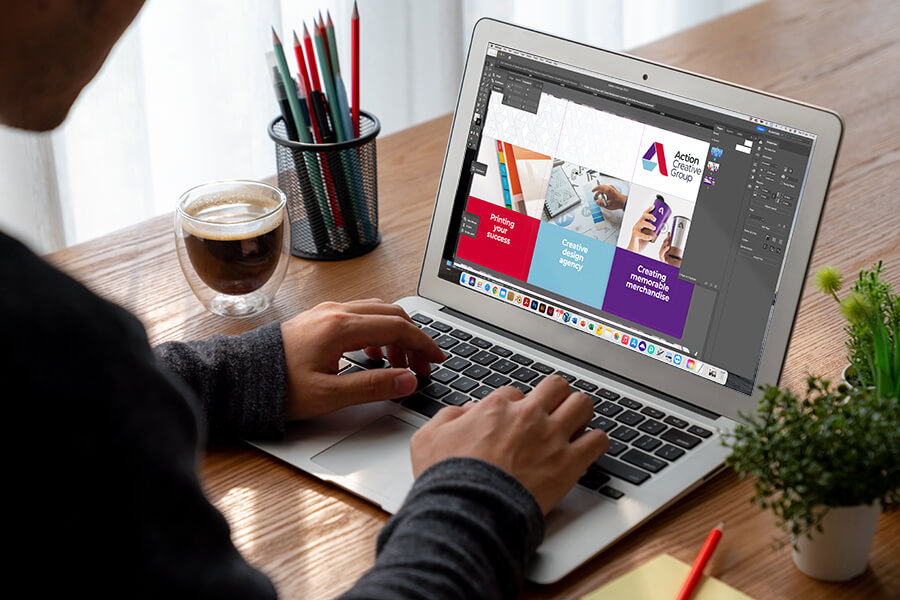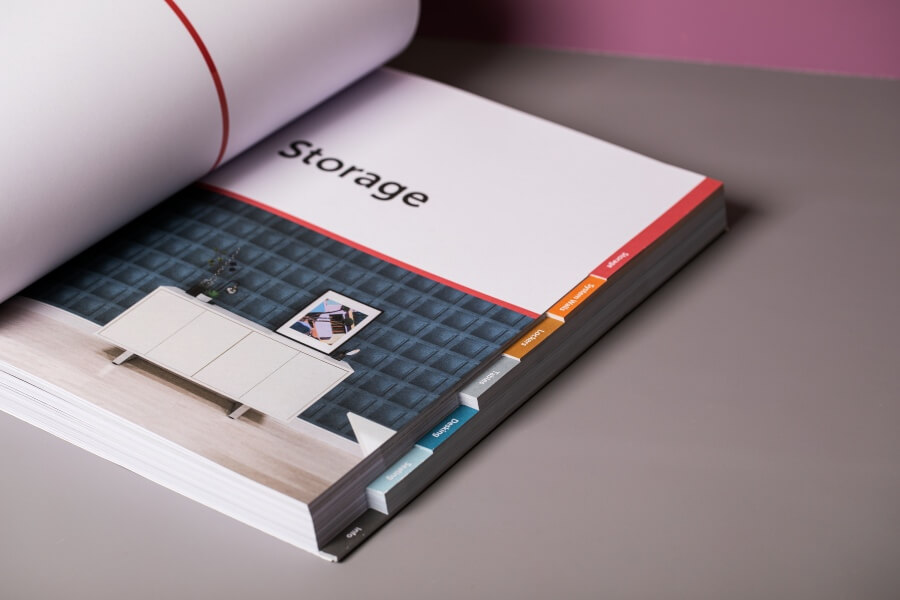Creating print ready artwork

Now there are more free or inexpensive programmes and online tools available for creating print-ready artwork we get a lot more DIY artwork sent to us, so we’re hoping this post will be a useful outline of the 6 golden rules that apply when creating print ready artwork.
Paper size
When setting up your artwork file, make sure you use dimensions that match the size of the sheet you finally want, here are a few standard sizes;
A0 = 841 x 1189 mm
A1 = 594 x 841 mm
A2 = 420 x 594 mm
A3 = 297 x 420 mm
A4 = 210 x 297 mm
A5 = 148 x 210 mm
A6 = 105 x 148 mm
Business cards 85 x 55 mm
Compliment slips 210 x 99 mm
The most popular page size we deal with is A4. Please do check the page is set up to the correct size as most office-based software defaults to US Letter size which is not the same.
Colour set up
CMYK is a colour space that stands for Cyan (blue), Magenta (red), Yellow and BlacK. This corresponds with the inks used on our presses so, ideally, your artwork should be set to print in CMYK to ensure a good colour match. Most software by default sets artwork as RGB which is the colour space used for screen viewing. Only the more advanced software and tools will offer CMYK colour as an option so if you can’t find the choice then don’t worry, our software will convert it to CMYK, the only problem is a risk of slight colour variation between what you see and what we print. Pantone or spot colours colours are used less now and cost a lot more to print.
Pictures/Images
In print, images need to be much higher resolution than online. Poor quality images can really let down an otherwise well-designed piece so it’s best to aim for the golden number, 300dpi (dots per inch). This will ensure that your images are pin-sharp when printed. An easy way to calculate if an image will be of good enough quality is to divide the overall pixel width by 300 – this will give you the number of inches in size an image will view at high-resolution.
Bleed & crop marks
If you require colour or images to print right to the edge we will need you to provide 3mm of additional artwork (known as bleed) to all sides. We’ll also require crop marks to show where the edge of your artwork is. Crop marks simply show us where to trim – they appear in the bleed area of your artwork and won’t show on the finished job. You’ll have the option to add the crop marks and bleed when you export the final file to pdf.
Creating multiple pages
If your booklet is to be saddle stitched or perfect bound the page count must be a multiple of 4 (i.e. 4, 8, 12 and so on, unless you are having a throw-out page). The front cover is always regarded as page 1 and it’s best to supply a single PDF containing all pages. Please supply your booklet artwork in single-page format running in the correct order from start to finish (i.e. a 20 page booklet will run from page 1-20 with page 1 being the front cover and page 20 being the back cover). With saddle stitched books, the closer you get to the centre pages of a booklet, the more paper will be trimmed from the foredge. Whilst our imposition software does make allowance for this, we recommend that you avoid positioning text, page numbers or images any closer than 5mm from all edges to avoid anything being unintentionally trimmed off during the binding process. There’s no need to impose as spreads or printers pairs because our pre-press software will do this automatically.
Outputting your artwork
A high resolution PDF is the best file format for supplying your print-ready artwork in. PDF file sizes are smaller than original artwork and are compatible with our prepress software and devices. It’s important that your PDF file is high resolution (300dpi is the industry benchmark) to ensure a quality end result. The following output settings are recommended for commercial printing:
-
- Resolution set to high resolution.
- Compression settings for both colour and greyscale set to maximum quality.
- Auto-compression set to maximum.
- All fonts must be embedded.
- PDF’s must include 3mm bleed and crop marks where applicable.
With all jobs we process, our studio team will diligently check the artwork to ensure it is set up correctly for print. We go through a ‘preflighting’ process that looks at things like page size, bleed, image resolution and colour space. If anything is awry, then we will let you know.

